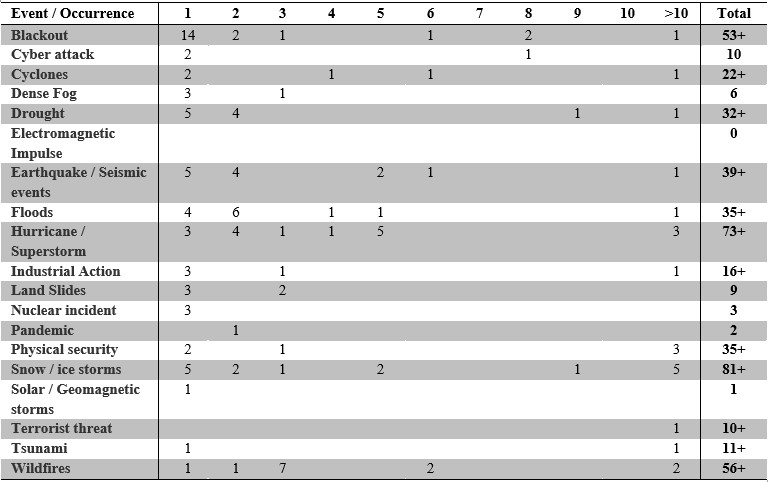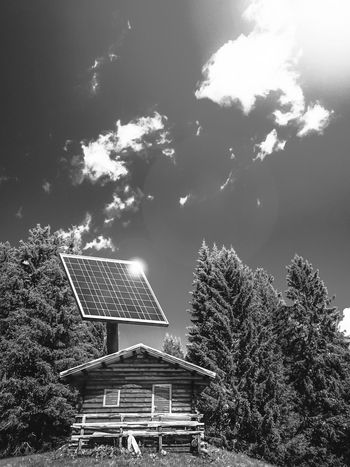Operating strategies and preparedness for system operational resilience
Power systems have changed faster than ever in the last two decades. They are now increasingly accommodating new types of resources in their generation mix which are inverter-based and behave very differently from conventional generators during system contingencies. On the other hand, climate change has caused environmental impacts that are more severe and more frequent than before. These two phenomena have created unprecedented vulnerability for power systems to High Impact Low Frequency (HILF) events. Disturbances caused by natural phenomena such as hurricanes, earthquakes, etc. have gained the focus of the industry to create measures and processes to enhance the resilience of power systems to these events. In addition to natural events, cyber- attacks and man-made threats are now more impactful than before due to increased digitisation and dependency of modern power systems to Information Technology and Operational Technology, which uses internet as a platform for daily operation of the power system.
Convenor
(DE)
J. JACOBS
Secretary
(NO)
L. TEIGSET
G. HESSE (AU), M. MILLER (AU), D. SHARAFI (AU), P. GOMES (BR), A. GUARINI (BR), M. AGUADO (FR), P. LEBRETON (FR), F. STEINKE (DE), H. WOITON (DE), C. KUMAR (IN), M. RENIERI (IT), M. POLI (IT), H. SARMIENTO (MX), S. TALOMO (IT), S. BRUIJNS (NL), S. DE GRAAFF (NL), A. STEFANOV (NL), J. CREMER (UK), T. ALSHAIKH (SA), G. JAKUPOVIC (RS), D. MANNO (US), J. MONKEN (US), C. REIGER (US), J. REILLY (US), A.K. SRIVASTAVA (US)
Content
CIGRE C2.25 Working Group’s focus has been on operating strategies and preparedness for system operational resilience. With this Technical Brochure the role of system operation is classified into power system resilience. For this objective, the Working Group prepared two surveys and assessed the responses of the respondents to the difference in understanding of resilience and reliability, the degree to which relevant HILF events have happened in different parts of the world and the operational resilience strategies that have been used to measure and manage these situations. Furthermore, improvements in the operational resilience have been the subject of questions in the surveys. Up to 38 different system operators and utilities from all around the world (Figure 1) responded to the survey questions providing a rich context to the subject of operational resilience and how these respondents deal with this new topic.

Figure 1 - Overview of responding countries to WG C2.25 survey
The difference between reliability and resilience is widely discussed in this Technical Brochure. While reliability is a well-understood concept in investment decisions, design and operation of power systems, the concept of resilience is either not fully understood or commonly mistaken for reliability. Many jurisdictions have regulatory frameworks allocating an economic value on reliability, which is closely linked to the value of lost load. Performance indicators for power systems are also designed to provide incentives for system operators to ensure power system reliability. However, there is not much framework on resilience and the current reliability frameworks only reflect the risk profile of power systems at the time they were designed a few decades ago. These frameworks were adequate at a time when the generation mix was dominated by a limited number of centralised, large, scheduled, synchronous and conventional generating units. In such a power system, the dominant events, causing risk to power system security involved contingencies or the unexpected loss of generators, network elements or large loads. Modern power system risk profile is very different and new approaches are required to manage these risks adequately. Differences between reliability and resilience need to be understood and measures and metrics to be developed. The process framework for resilience can be described as shown in Figure 2.

Figure 2 - General resilience framework
According to recently published definition of Power System Resilience prepared by CIGRE WG C4.47 “Power system Resilience is the ability to limit the extent, severity and duration of system degradation following an extreme event.” This objective is achieved through a set of key measures to be taken before, during and after extreme events, such as anticipation, preparation, absorption, adaptation, rapid recovery and sustainment of critical system operation. That includes the application of lessons learnt after an event occurred.
Physical, natural and man-made, as well as cyber threats have the potential to cause catastrophic impacts on the electric power system and on grid operability due to potential loss of grid infrastructure assets as well as functionality of critical tools for grid operation. Hence, necessary preparation and counter-measures need to be identified and implemented to manage such events, taking into account the likelihood and the extent of their potential impact. HILF events transcend other risks to the sector due to their magnitude of impact and the relatively limited operational experience in addressing them. In addition, it needs to be considered that incidents in one specific industrial sector nowadays significantly affect other sectors, as interdependencies within the energy sector, e.g. electricity, gas, heat etc. as well as between different industrial sectors such as power, communication and transport grow. Therefore, the need for coordination between interdependent sectors is increasingly becoming vital to ensure security of supply.

Table 1 - Overview of occurrence of HILF events since 2000
The survey identified that more than 90% of the respondents face HILF events in their electricity infrastructure. Table 1 provides an overview of the responses to the question of how often the respondent’s systems have faced specific HILF events since the year 2000. Creating Responses summed up and ranked by the number of occurrences showed that events caused by weather conditions have the highest incidence. Environmental events range between country to country and some specific events are more critical for some utilities compared to others. Man-made physical threats such as endangering physical security and terrorist threats have also ranked high for the respondent utilities. Nevertheless, from today’s experience, the general impact of natural physical threats can be expected to be higher compared to man-made physical threats. These threats and their ranking are in detail discussed in this Technical Brochure.
Operational resilience can benefit from developing metrics for power system resilience. This will help to understand how a power system reacts to an event and what metrics should be used to assess its performance. There are many metrics that can be used based on existing data and there are metrics that can be developed to evaluate future system’s performance. Some of these metrics originate from the available data that are relatively simple to collect, and some are from more complex data which may require analytical skills, tools and modelling. Some metrics can be applied retrospectively to previous events and some are forward-looking which can be used for hypothetical events. Targeted metrics can also be developed to be applied to a single or group of events, or metrics that can be applied to various events and provide broad insight across a wide range of situations. Reproducibility of the assessments using certain metrics is important such that they be used to analyse repeated events in order to provide consistency of approach. Resilience metrics can generally be grouped into one of two categories: attribute-based (Qualitative) and performance-based (Quantitative) metrics.
Conclusion
Due to the changing nature of the power system and the increase in extreme events, improvement in the operation of modern power systems and adoption of a new risk-based methodology is required. These changes render current operational measures insufficient as they do not account for resilience to extreme events well enough. Currently, the preparation for these types of events requires the concept of continuous learning and adapting. The response to an extreme event involves a post-event analysis and the lessons learned. Such an analysis includes action plans and tailored training and preparation plans to improve the operational resilience for similar events in the future. The following gaps in the operational resilience strategy have been identified that need improvements:
- The needs for development of a risk-based methodology;
- A risk analysis for interdependent facilities;
- Communication and coordination with several third parties and other public authorities;
- The absence of operational resilience consideration in current decision-making supporting tools;
- The absence of metrics for operational resilience;
- The need for innovative market mechanisms to enable secure operation of the system;
- The lack of cyber security preparedness and
- The training of the operators specifically with external stakeholders.
This Working Group hopes that future work will be targeted at better understanding of these identified gaps and recommending adequate measures to ensure power systems continue to operate securely, reliably and resilient in the future, while they integrate cleaner energy and go through this transformational change in the energy system.



